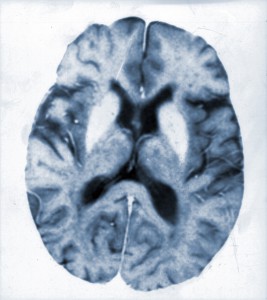 What is Hallervorden Spatz disease?
What is Hallervorden Spatz disease?
Hallervorden Spatz disease (HSD) is a rare inherited neurological disorder characterized by progressive extra pyramidal dysfunction and dementia (Loss of memory). It is a serious condition that worsens over time. Hallervorden Spatz disease can be fatal.
Hallervorden and Spatz first described the disease, in the year 1922, as a form of familial brain degeneration characterized by iron deposition in the brain.
How does the disease begin?
The onset of symptoms commonly occurs in late childhood or early adolescence. The common presentation is in the late part of the first decade or the early part of the second decade most commonly between ages 7 and 15 years.
What causes Hallervorden-Spatz disease?
- HSD is caused by an inherited defect in the pantothenate kinase 2 (PANK2) gene.
- In some cases, HSD is not caused by PANK2 mutations. Instead, it may be caused by defects in one or more other genes which have not yet been identified.
Symptoms Of HSD
- A common symptom of HSD is distorting muscle contractions occurring in the face, trunk, and limbs.
- Unintentional, jerky muscles movements, involuntary muscle contractions that cause abnormal posture or slow, recurring movements. This is called as dystonia.
- Uncoordinated movements. This is known as ataxia.
Other symptoms of HSD include:
- Rigid muscles
- Writhing (Twisting) movements
- Confusion
- Disorientation
- Stupor (Semi consciousness)
- Seizures (Fits)
- Dementia
- Weakness
- Tremors
- Drooling of saliva
- Difficulty swallowing (dysphagia)
Less common symptoms are:
- Vision changes
- Unclear speech
- Facial grimacing
- Painful muscle spasms
Diagnosis
- Enquire about family history, because the disease can be inherited.
- To diagnose HSD, you may need a neurological examination. Confirm for tremors, muscle rigidity, weakness, and abnormal movement or posture.
- Rule out other neurological or movement disorders through MRI.
Treatment of Hallervorden-Spatz disease
As of now, there is no cure for HSD. Instead, your doctor will treat you symptomatically. Treatment varies from person to person. However, it may include both therapy and medication.
Physiotherapy: helps to reduce muscle rigidity and improve muscle weakness. It may also help with muscle spasms and other muscular issues.
Speech therapy: can be useful for Dysphagia or speech impairment.
What Is the Prognosis of Hallervorden Spatz Disease?
HSD gets worse with time. Progression of the disease is faster in affected children than in people who develop HSD later in life. People with late-onset HSD may live well into adulthood.
Scope Of Homoeopathy In HSD
Homoeopathy can be effective in giving supportive therapy to the patient in order to improve the quality of life of the patient. Homoeopathy is effective in controlling the symptoms like muscle weakness, tremors, walking difficulties, speech difficulties etc. Homoeopathic medicines can halt the further progress of the disease especially in patients with late onset HSD, but it may differ from one individual to another. Genetic counseling is recommended for families with a history of the disease.

 What is Hallervorden Spatz disease?
What is Hallervorden Spatz disease?


